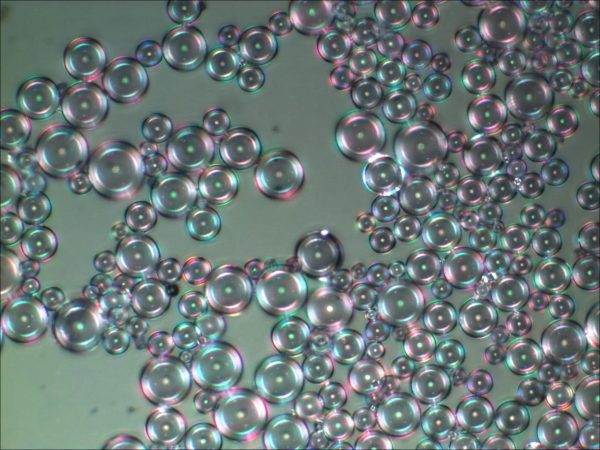
The main component of hollow glass microspheres is borosilicate, which is an amorphous material with a white powder appearance. It is a micron-sized hollow glass sphere with a smooth surface. Its particle size distribution is 5~100μm, its true density is 0.12~0.70g/cm3, its bulk density is 0.10~0.40g/cm3, its thermal conductivity is 0.038~0.060W/(m·K), and its maximum compressive strength is approximately 207MPa (30000psi).
Hollow glass beads are micron-sized, hollow-structured glass spheres developed in recent years. Due to their unique structure and surface modification, they are widely used in oil drilling, engineering plastics, and building energy-saving coatings. It is widely used in fields such as industrial anti-corrosion coatings, adhesives, rubber materials, emulsion explosives and electromagnetic shielding.
1. Chemical grafting on the surface of hollow glass microspheres
As an inorganic powder filler, hollow glass beads have interfacial compatibility issues when mixed with polymer materials. The interface bonding strength between hollow glass beads and organic materials is not enough, and the interface between hollow glass beads and polymer materials is a key factor in controlling the mechanical properties of composite materials. When subjected to external forces, if the polymer materials cannot bind the hollow glass Sufficient fixation of microbeads will cause defects in the composite material, resulting in a decrease in the tensile strength and impact strength of the material. If a surface treatment agent is used to chemically graft the surface of hollow glass microspheres to improve the interface bonding strength between hollow glass microspheres and polymer materials, the mechanical properties of the polymer materials can be effectively improved. The surface of hollow glass microspheres contains a large number of silanol groups, which can be surface modified with silane coupling agents.
2. Surface coating and electroless plating of hollow glass beads
As a lightweight material with low density and high filling ratio, hollow glass beads have broad application space in the fields of reflective insulation coatings, conductive materials, electromagnetic shielding materials, etc. However, due to their insufficient surface reflectivity and poor conductivity , limiting its application in the above fields. Materials such as titanium dioxide with higher reflectance and nano-silver powder with better conductivity, graphene oxide and carbon nanotubes have higher process and material costs. Therefore, surface coating of hollow glass beads and electroless plating technology emerged as the times require. The surface coating and electroless plating of hollow glass beads can not only increase the material filling rate and achieve lightweight materials, but also meet the requirements of material reflective heat insulation, high conductivity and electromagnetic shielding.
